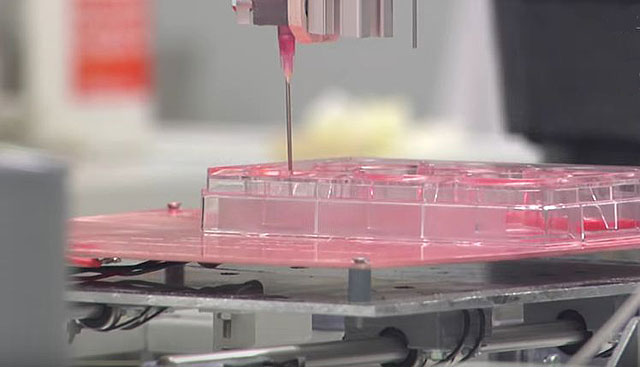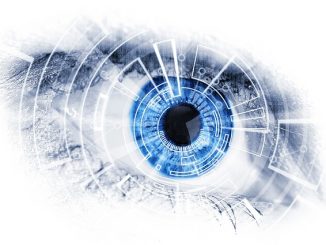
A new item has just been added to the list of things that can be 3D printed: human skin. This is what researchers from the Universidad Carlos III de Madrid (UC3M) in Spain have recently demonstrated. With a 3D printer that uses special ink composed of human cells, they were able to create human skin that looks and behaves like real skin — with a dermis and an epidermis, able to produce collagen and react like real skin does to tests done.
This artificially created human skin opens up a host of possible applications, the most important of which is skin transplants for burn victims or people with different kinds of abnormal skin conditions. Another potential use would be for pharmaceutical, cosmetic and chemical products testing — the more effective and ‘humane’ kind because it will make testing on animals no longer necessary.
The bioprinter used by the research team is made up of 3 units: the programmable computer that controls the activities of the bioprinter; the bio-ink storage unit which holds the cartridges containing biological components, cells and proteins that make tissue creation possible; and the printing units which perform the tissue creation. The bioprinter produces skin tissue in two ways: autologous skin production and allogenic skin production. Autologous skin production makes use of the patient’s own skin cells, and is done for therapeutic purpose. Allogenic skin production makes use of a stock of cells, and is done for industrial purpose.
3D-printing body parts is not a new concept. Ever since the discovery that living cells could be placed in printers without being destroyed, there have been numerous experimentations with print cartridges spraying out different kinds of cells and polymers to create living tissue. Right now, researchers from different areas in the world are trying 3D printing to create bones and cartilage, blood vessels, kidney tissue and liver tissue. So far, 3D-printed bones, ears and muscles have been successfully implanted into animals. And just last year, prosthetic ovaries were successfully implanted in mice by researchers from Northwestern University in Chicago. And those mice were actually able to conceive and give birth with the help of the artificially created ovaries.
In terms of human subjects, however, there’s clearly a long way to go before artificial skin can be used on burn patients and those with skin disorders. But the researchers are optimistic that they are on the right track, and that the new technology will soon be able to help bring relief to those who are in need of it.
Further down the road, the hope is that recent advances will lead to 3D-printed human transplant organs and hopefully provide a viable solution to the problem of organ donor deficiency. In fact, researchers claim that the first 3-D-printed livers and kidneys for human transplant may be ready within six years.
The study has recently been published online through the scientific journal Biofabrication.
- Bulenox: Get 45% to 91% OFF ... Use Discount Code: UNO
- Risk Our Money Not Yours | Get 50% to 90% OFF ... Use Discount Code: MMBVBKSM
Disclaimer: This page contains affiliate links. If you choose to make a purchase after clicking a link, we may receive a commission at no additional cost to you. Thank you for your support!




Leave a Reply